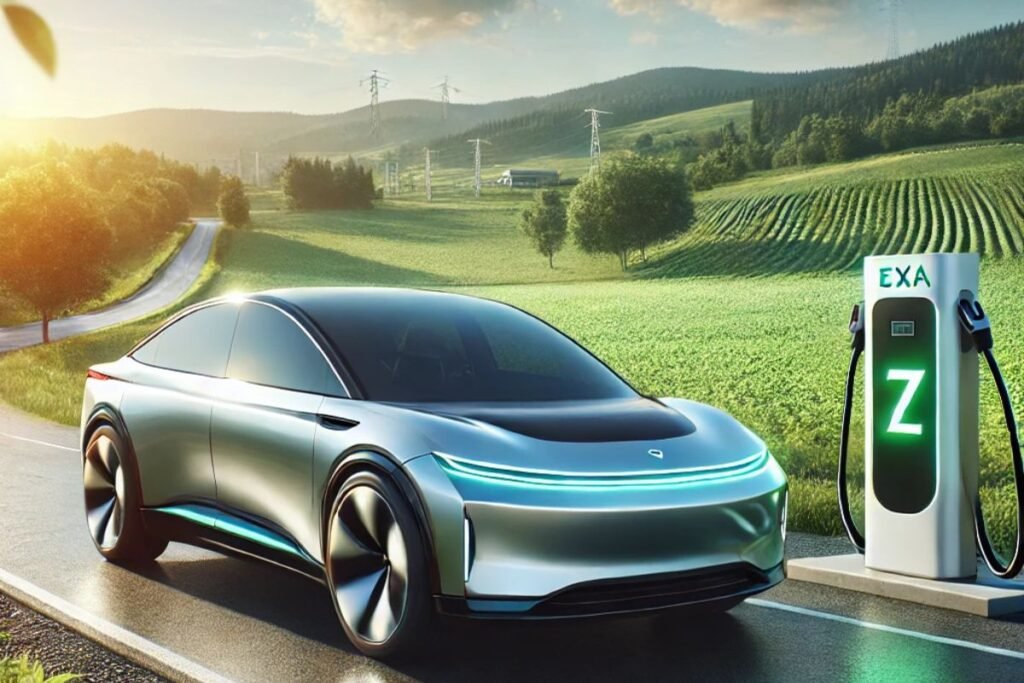Electric vehicle (EVs) are transforming the transportation landscape, offering an environmentally friendly alternative to traditional gas-powered vehicles. Driven by advances in technology and growing environmental awareness, EVs are more popular and accessible than ever. As more people make the switch, electric vehicles are not only helping to reduce carbon footprints but also delivering an exciting, high-performance driving experience. Here, we’ll delve into the benefits, types, and future of electric vehicles, exploring why they’re more than just a trend and how they’re reshaping the way we travel.
Table of Contents
Why Choose an Electric Vehicle?
The primary reason for the shift toward electric vehicles is their environmental impact. EVs produce zero tailpipe emissions, reducing air pollution and greenhouse gases, which are primary contributors to climate change. Unlike internal combustion engines (ICE) that rely on fossil fuels, electric vehicles operate on electricity, often sourced from renewable energy. This makes them a cleaner, more sustainable option.
However, the benefits of electric vehicles go beyond just environmental impact. Here are some key advantages:
- Lower Operating Costs: While EVs may have a higher upfront cost, they typically save money in the long run. Electricity is generally cheaper than gasoline, and EVs require less maintenance. There’s no need for oil changes, fuel filters, or complex exhaust systems, which makes upkeep simpler and less expensive.
- Enhanced Performance: Modern electric vehicles deliver impressive power, thanks to the instant torque provided by electric motors. This means faster acceleration, smooth handling, and a quiet ride. Many EVs can outperform traditional cars in terms of speed and responsiveness, creating a thrilling driving experience.
- Convenience and Flexibility: As charging infrastructure expands, it’s becoming easier to find charging stations across cities, on highways, and even at workplaces. Plus, many EV owners install home charging stations, making it possible to start each day with a full battery. Some EVs even allow users to set charging schedules, maximizing efficiency by charging during off-peak hours.
- Government Incentives: Many governments worldwide are offering incentives to encourage EV adoption. These may include tax credits, rebates, or reduced registration fees. Combined with the cost savings on fuel and maintenance, these incentives help make EVs more affordable.
Types of Electric Vehicles
The term “electric vehicle” actually encompasses several types of cars. Here are the main types:
- Battery Electric Vehicles (BEVs): These are fully electric and rely solely on a rechargeable battery pack. BEVs produce no emissions and are often referred to as “pure electric” vehicles. Popular models include the Tesla Model S, Nissan Leaf, and Chevrolet Bolt.
- Plug-in Hybrid Electric Vehicles (PHEVs): PHEVs combine a battery with an internal combustion engine. This allows them to switch between electric and gasoline power, providing greater flexibility for long-distance travel. Examples include the Toyota Prius Prime and the Ford Escape PHEV.
- Hybrid Electric Vehicles (HEVs): While not fully electric, HEVs have both an electric motor and a gas engine. They can’t be charged externally but rely on regenerative braking to recharge the battery. Common HEVs include the Honda Accord Hybrid and the Toyota Camry Hybrid.
The Future of Electric Vehicles
With technology advancing rapidly, the future of electric vehicles looks promising. Many automakers are committing to phasing out gasoline-powered vehicles within the next decade, focusing on EV production. Battery technology is improving, resulting in longer driving ranges, faster charging times, and lower costs. These innovations make EVs more practical and affordable for everyday use.
Autonomous driving technology and EVs are also converging, with many companies working on self-driving electric vehicles. This integration is set to redefine urban mobility, as fleets of autonomous EVs could reduce traffic congestion, lower pollution, and make transportation more accessible.
Moreover, EVs are inspiring the development of smart energy solutions, like vehicle-to-grid (V2G) technology. V2G allows EVs to feed energy back into the grid, helping to balance demand and supply. This could transform EVs into mobile power sources, supporting renewable energy integration and contributing to a stable grid.
Challenges and Solutions
While electric vehicles have come a long way, they’re not without challenges. The availability of charging infrastructure, range limitations, and high initial costs remain concerns for many potential buyers. However, significant progress is being made:
- Expanding Charging Infrastructure: Governments and private companies are investing in charging networks, ensuring more widespread and faster charging options.
- Improving Range: Advances in battery technology are extending driving ranges, making EVs suitable for longer trips.
- Reducing Costs: As battery production scales up, prices are dropping, making EVs more affordable over time.
FAQs about Electric Vehicles
1. How long does it take to charge an electric vehicle?
Charging times vary based on the battery size and charger type. A standard home charger takes several hours, while a fast charger can recharge most EVs to 80% in about 30 minutes.
2. Do electric vehicles save money?
Yes, while EVs can have higher initial costs, they save money in fuel and maintenance, making them more economical over time.
3. Are electric vehicles safe?
Yes, EVs undergo rigorous testing and meet strict safety standards, often with features like lower centers of gravity and additional crash protection.
The transition to electric vehicles is more than a shift in how we drive; it’s a move toward a cleaner, greener future. As technology progresses and infrastructure grows, EVs are becoming an increasingly viable option for all. By choosing electric, you’re not only investing in advanced technology but also contributing to a healthier planet.


